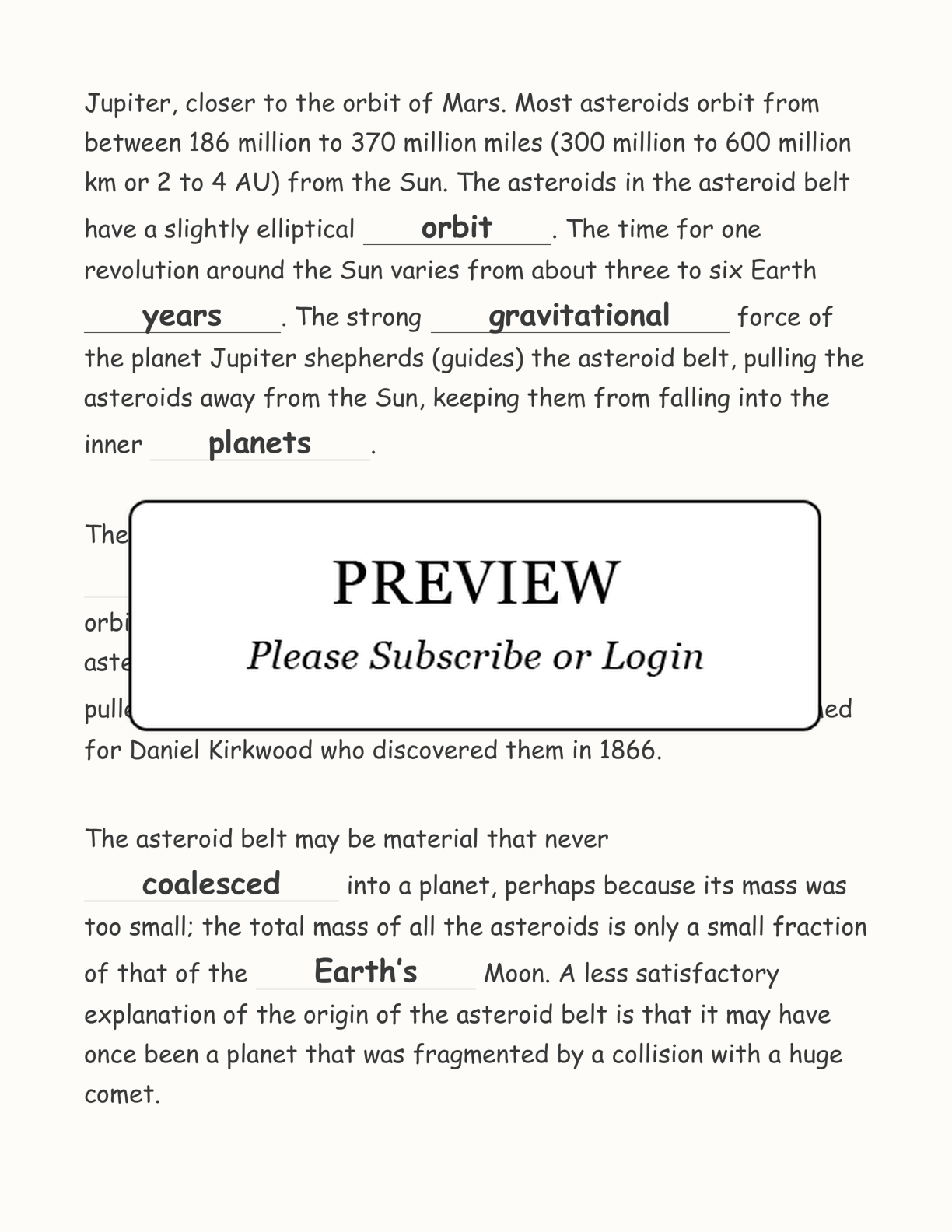Content Only Available to Members
Worksheet Preview
Asteroid Cloze Activity







1

2

3

4

5

6
Title
Asteroid Cloze Activity
Content Type
Printable Worksheet
File Type
PDF
Pages
6 pages
Contains Answer Key
Available to Members Only
Use the word bank to fill in the blanks in this asteroid cloze activity. This is a printable worksheet.
Instructions
For the Student:
Use the word bank to fill in the blanks below.
Extra Information
Word Bank
asteroid, atmospheres, belt, coalesced, Earth’s, gaps, gravitational, Kirkwood, km, Mars, moons, orbit, planetoids, planets, Sun, years
